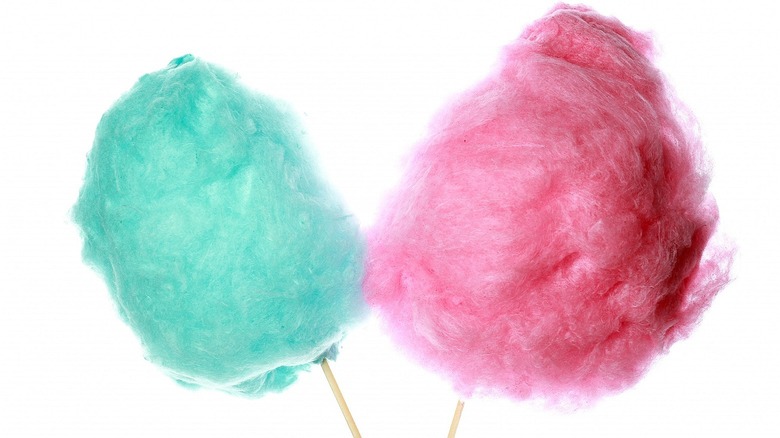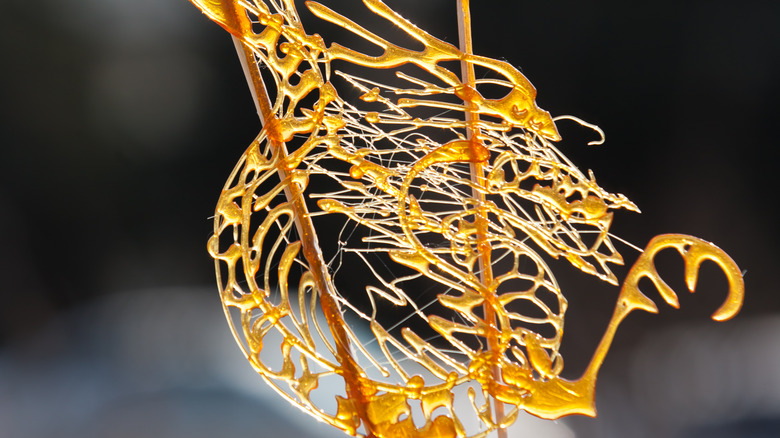Here's The Difference Between Cotton Candy And Spun Sugar
Picture yourself at your state's big fair or a local carnival. What thoughts would come to mind? The dazzling sight of a rollercoaster. The sound of carnival games. A sea of joyful patrons on a bright sunny day. While each is a common element of a fair or carnival, the foods you'll find at such fairs are some of the most powerful memory triggers.
Whether it's the enticing smell of grilled hot dogs, the tasty crunch of a corn dog, or the smell of buttered popcorn, each evokes a sense of nostalgia. And while sweet offerings like funnel cake and candy apples are carnival classics, one sweet could be argued as the defining fair treat — cotton candy. According to an Ask Your Target Market survey, 47% of respondents report enjoying the treat during a trip to the fair and 56% prefer to get their cotton candy at a carnival. The real question, though, is whether it's cotton candy or spun sugar being served? So what makes cotton candy different from spun sugar?
Cotton candy is the modern version of spun sugar
Spun sugar, also known as angel hair (via Institute of Culinary Education), got its start as a sweet treat that was enjoyed almost exclusively by the elite class in Italy during the 15th century. Spun sugar is actually what predates the fluffy cotton candy we enjoy today. Chefs would melt the sugar and pour it on a table. They would then add different types of add fruit to the mix, creating edible art for their guests to enjoy. Then as technology advanced, so did the way food was made. By the 1900s, the "electric cotton candy machine" was created, which changed everything, per The Burkett Blog.
Inventors William Morrison and John C. Wharton brought their new machine to Paris and Saint Louis to offer, what they coined "fairy floss," to those attending the events. Fairy floss was an instant hit. Within six months, nearly 68,000 boxes had been sold, which yielded around $370,000 in today's value. The term "cotton candy" gradually began to replace the terms fairy floss and spun sugar in the 1920s because the end product held a high resemblance to cotton. While the process of making cotton candy has remained relatively the same over the decades, the addition of new exciting flavors keeps this confection a favorite in the hearts of many.

